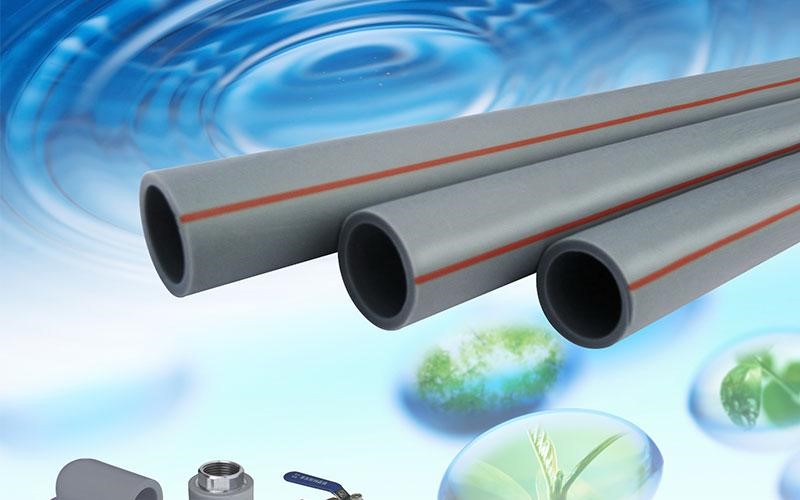Table of Contents
A water delivery system comprises three essential elements: the source of supply, the processing or treatment of the water, and the delivery of water to consumers. Water is transported from the start to the treatment plant by conduits or aqueducts, either under pressure or in open-channel flow. Following treatment, the water joins the delivery system either directly or through supply conduits.
It’s essential to know how the water delivery system works since it doesn’t just have one process. It composes a series of procedures that need to be learned carefully. Below are some essential parts of this system that you need to understand.
Part 1. Elements of Public Water Supplies
1. The source of supply
The raw water source for a public water system must have enough water to satisfy both urban, institutional, and industrial needs, as well as fire-fighting demand. The most common kinds of water are sourced either from the surface or the ground.
While a single stream provides most water supplies, there are times when both surface water and groundwater are used. Wide rivers or dams are used to provide surface water; a small stream can even be ideal if it is dammed. Groundwater is typically collected by drilling wells under the water table into the saturated region.
2. The processing or treatment of the water
Surface water quality may vary since this type of water may contain microorganisms that may or may not include organic or inorganic particles and contain dissolved solids. Typically surface water may look, taste, and smell undesirable because it may be contaminated with sewage, industrial waste, agricultural runoff, and animal waste.
Conversely, groundwater, although also contaminated because of human activity, is way more clear, lacks color, and has lower concentrations of microbes than its counterpart due to the natural filtration system developed by the earth from the soil, sand, or gravel.
Groundwater is better suitable for use in a public water supply – it may only need adequate disinfection to ensure that it is safe for consumption which would depend on the type of contamination present. However, for surface water to become acceptable, it may need a more comprehensive treatment as opposed to ground waters.
Raw water treatment may be performed through the following processes: coagulation, sedimentation, filtration, softening, and removal of iron plus disinfection.


3. The distribution of water to consumers
The distribution system is responsible for the transportation of water from the treatment plant to the would-be consumers. This system is highly complex and demands a sound system design to avoid costly problems in the future; water quality may be hampered or improved depending on the physical structure, construction, and operation of this valuable component of the public water supply.
Part 2. Drinking-Water Distribution Systems Components
1. Pipes
The first component of a public drinking water supply system in your area is the pipes that allow the transportation of safe, potable water. They are essential because it protects the water from contamination and enables consumers to access it through pressurized systems that also give the water its treatment or finished quality.
A system of interconnected pipes must be designed to withstand the rigors of everyday use; for example, water pressure in residential areas must be around 30 to 50 pounds per square inch gauge (psig) with the constant flow in commercial areas; however, it must range from 60 to 75 psig.
2. Storage facilities
Water storage facilities for treated or finished water are intended to equalize water demands, minimize pressure variations in the delivery system, and provide supplies for fire prevention, power failures, and other emergencies.
3. Components that convey drinking water
Several processes convey drinking, including filtration, sedimentation, or distillation, among the physical methods. Moreover, biological processes include sand filtering and the use of active carbons. Lastly, chemical processes such as chlorination, flocculation, and even the use of ultraviolet light give us our purified drinking water. The type of water supply system may also vary depending on the scientific process involved in creating potable water.
Part 3. Pipes Used in Public Water Supplies
Public water supply companies employ two main piping systems. The use of these piping systems varies depending on their primary consumers’ needs.
1. Water Treatment Plant/Municipal Water Supply System
This particular distribution system uses polyethylene (PE) pipes which is a thermoplastic material mainly used for city and urban water demands. Aside from this, PE pipes are also famous for their usage in the sewage treatment sector. This is because they are resilient, have excellent insulation properties, and are mostly resistant to pressure. It can be used for a maximum of fifty years due to its wear and corrosion.
2. Construction/Household Water System
This portable water piping system uses two primary materials in its distribution channel – PVC and PPR pipes. Polyvinyl pipes are the most common when it comes to household supply and is used primarily to transport cold water. It has remarkable corrosion resistance and is known for its toughness. PPR pipes are known for being lightweight and longevity. Aside from being non-toxic, it is also quite resistant to both cold and hot water systems.
Part 4. The Importance of Using Good Pipes in Public Water Supplies
A reliable water supply system needs to be resistant to age, deterioration because of corrosion, erosion of materials, and external pressure resulting in fluctuation of water pressure. But most importantly, the consistency of processed water should ideally remain constant from when it exits the treatment plant before it is drunk.
In line with these goals of building a drinking water supply system in your area, China LESSO is at the forefront in the industry when it comes to offering a comprehensive range of products in domestic home building materials, which include more than 10,000 specifications in various areas: but most especially materials to facilitate the creation of a public water supply.


Fortunately, the company is committed to bringing you the best when it comes to a municipal water supply. LESSO offers top-of-the-line PE, PE-RT pipes, and fittings for the plumbing system of your intended public water supply system.
They offer a variety of plumbing pipes that are suitable for hot or cold water. All the other components needed to ensure that potable, drinking water is provided to an area near you without compromising quality, performance, and durability are produced by LESSO. They also make sure to meet the required regulatory requirements since their products go through thorough testing.
Utilizing good pipes is vital to ensure a high-quality water distribution system. It provides the safety of its customers and ensures that no additional fees are needed for unforeseen breakdowns.
At China LESSO, our goal is to create a relaxing life for our customers. We guarantee that you only use top-tier PE and PE-RT pipes for all your plumbing needs.
Recommend Reading


Common Myths About Water Pipe Fittings
Plumbing is an important aspect of any construction works. Therefore, you need to pick the best water pipes and fittings to avoid disappointments and ensure


The Ultimate Revelation of Water Supply Pipe
The transportation of water for consumption by the general population has seen a few trends and changes over the past several decades. The main contributing








